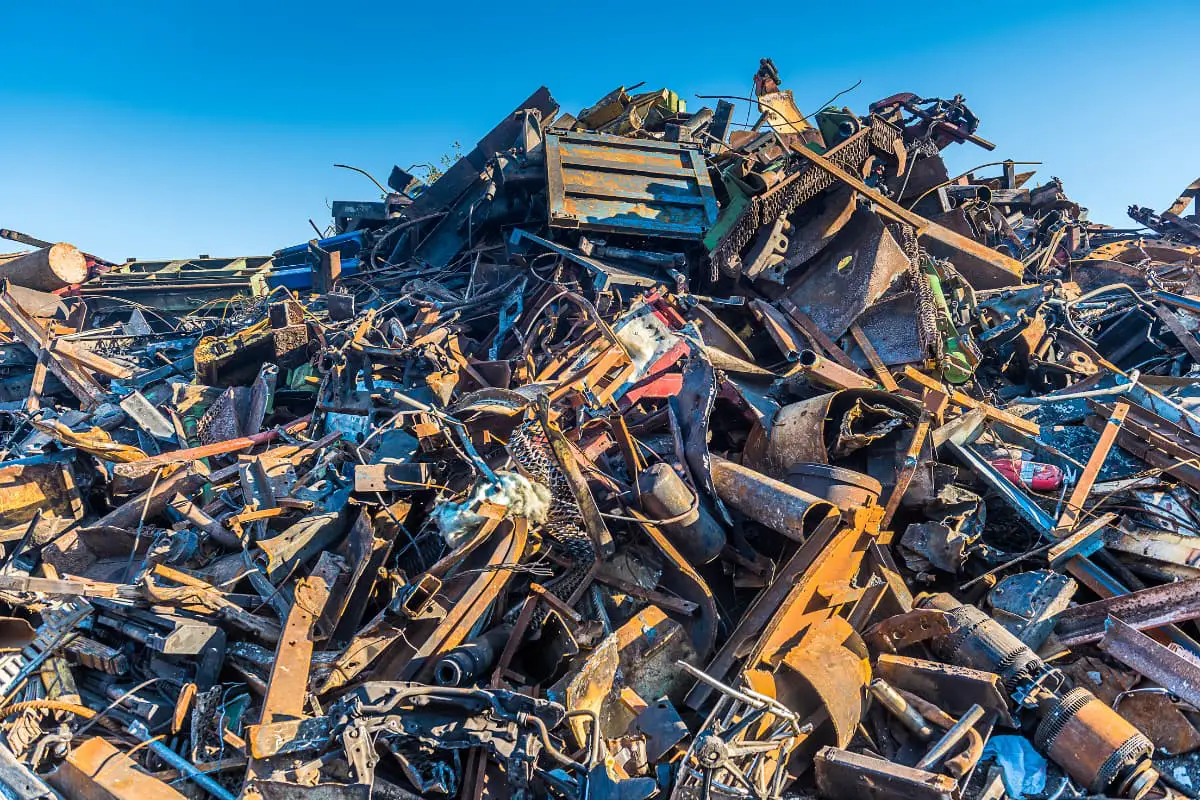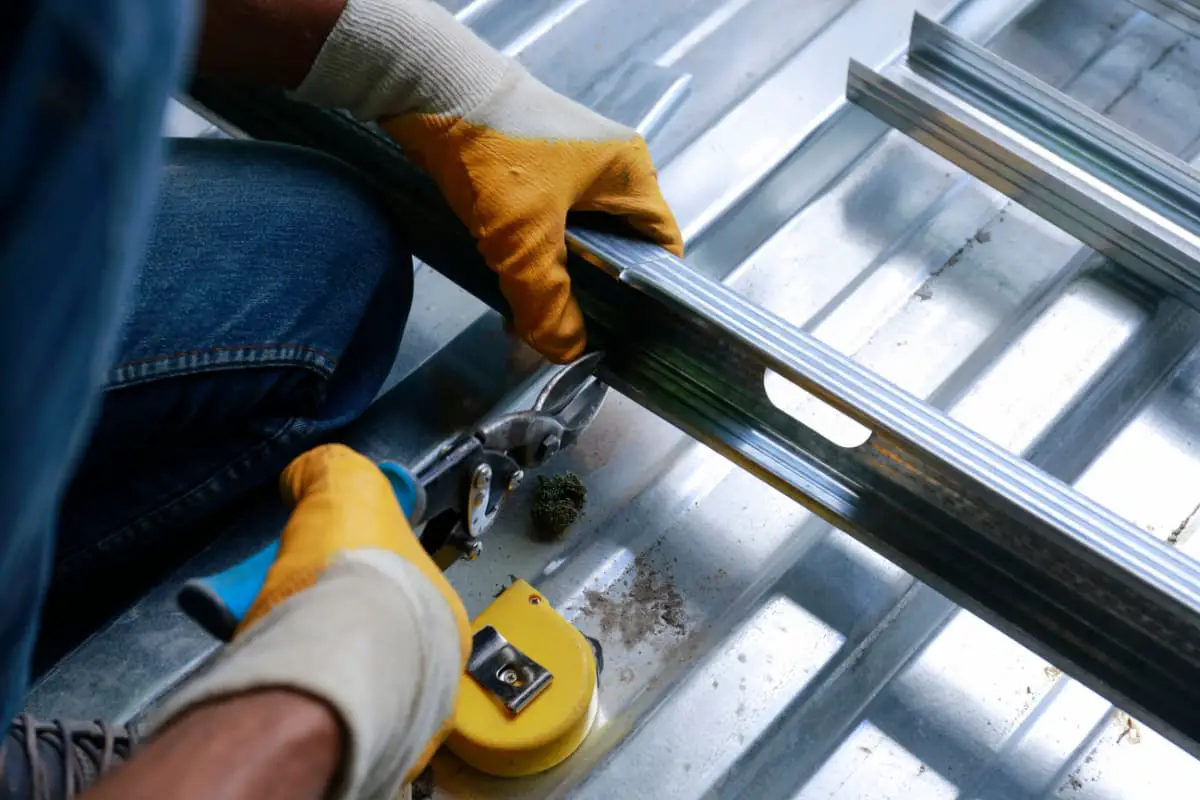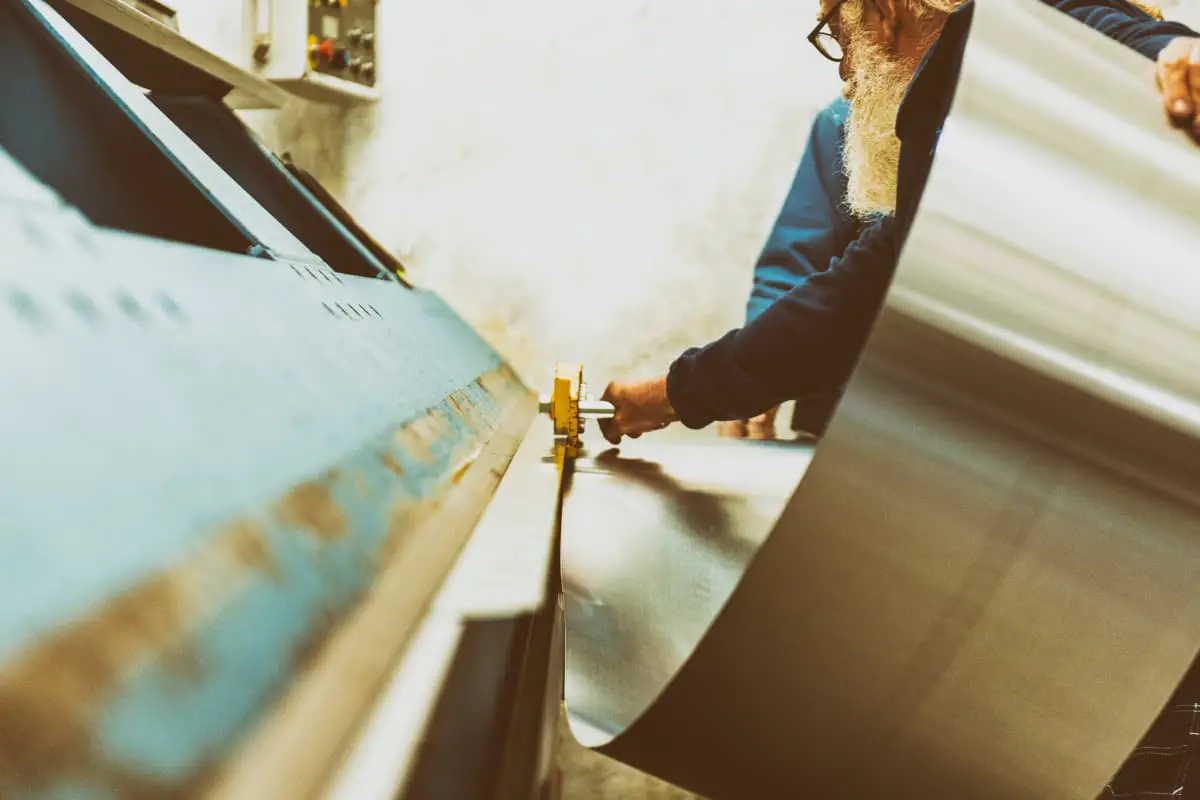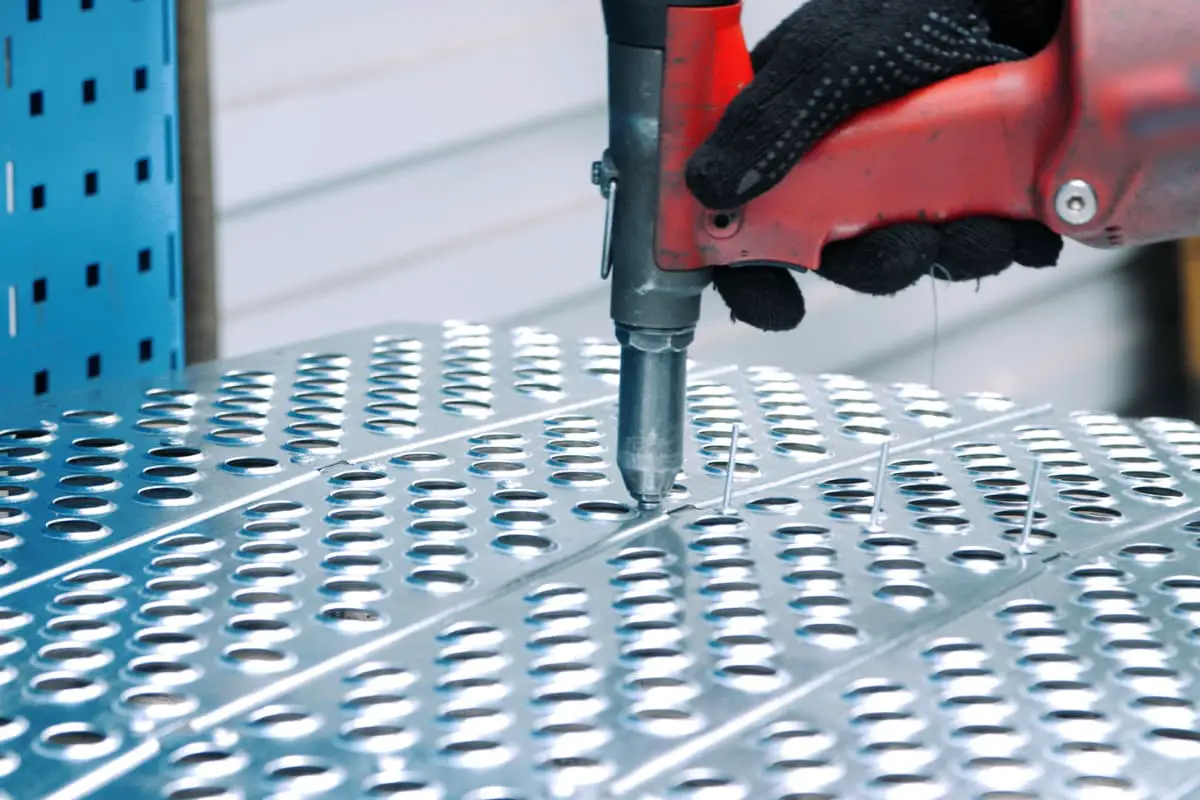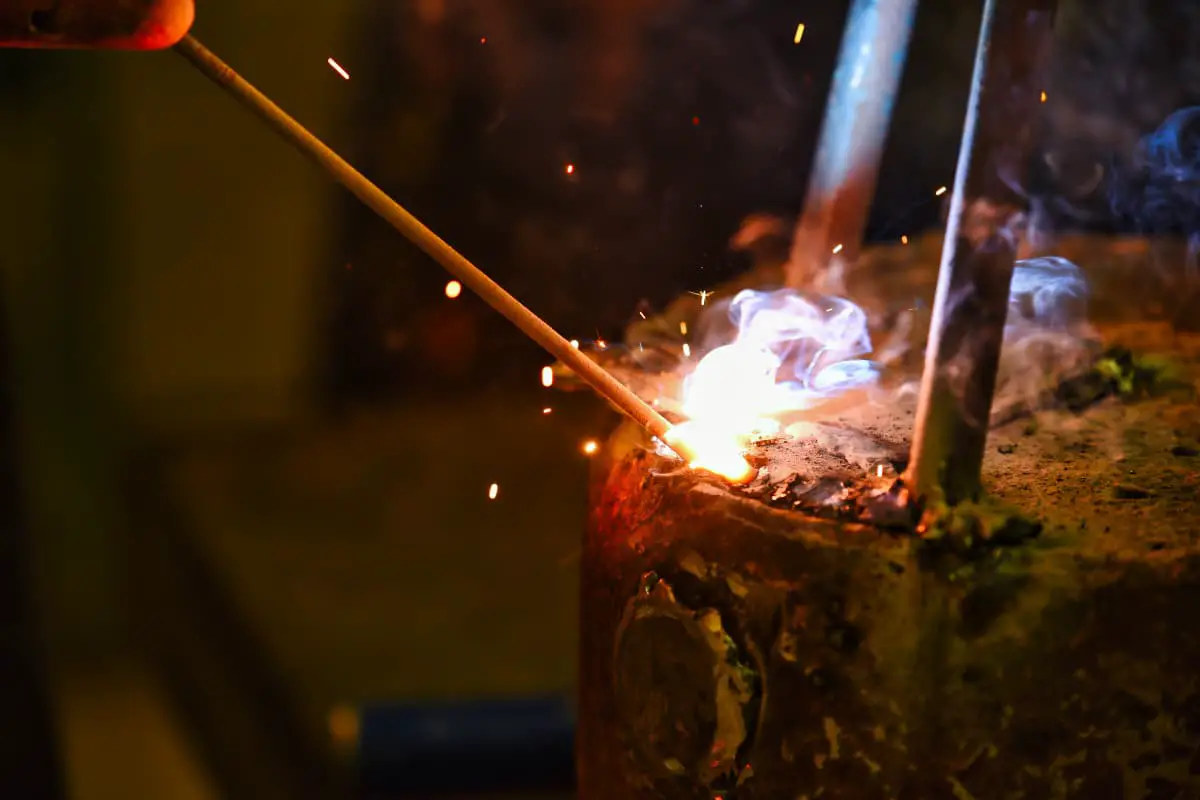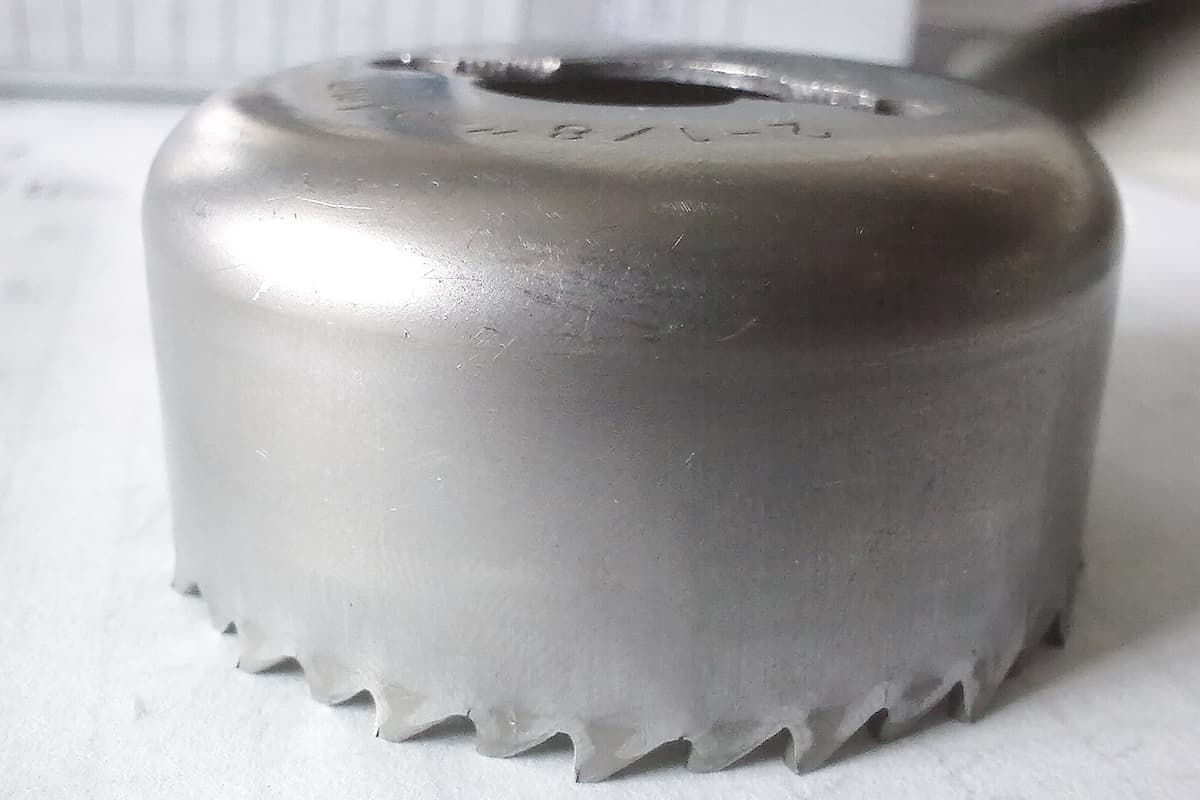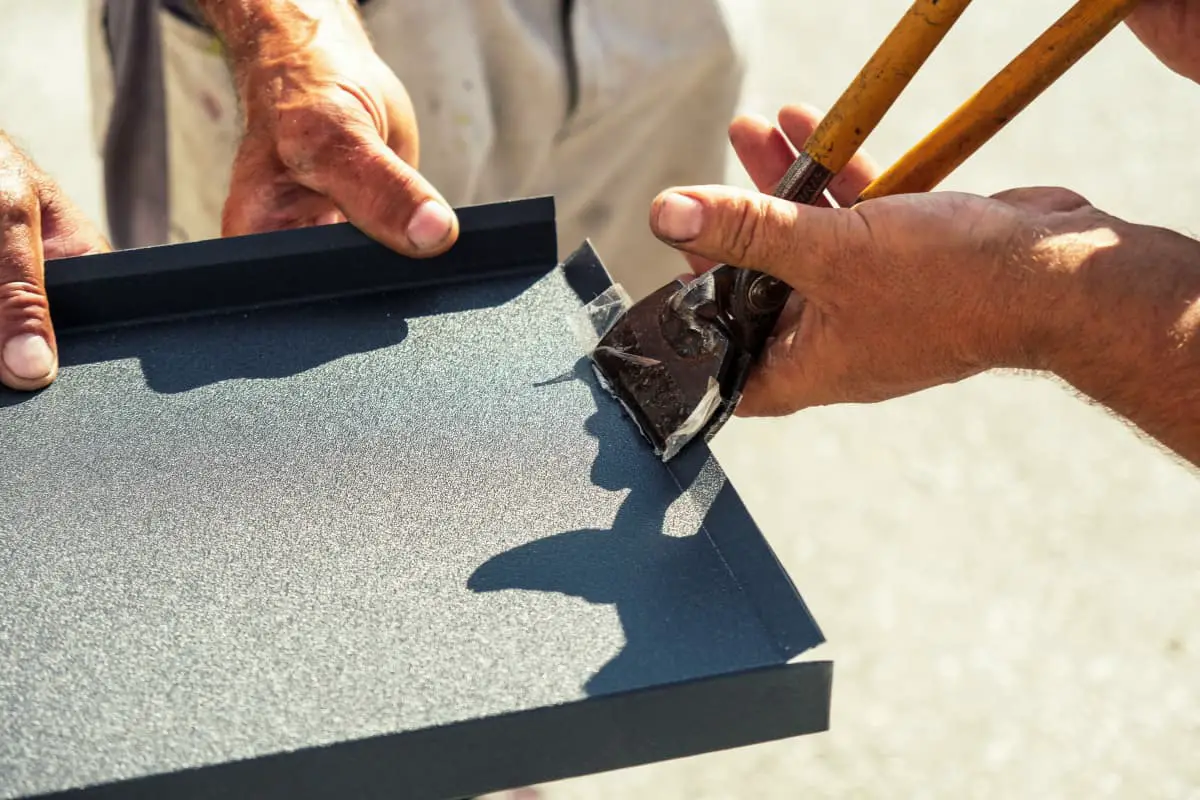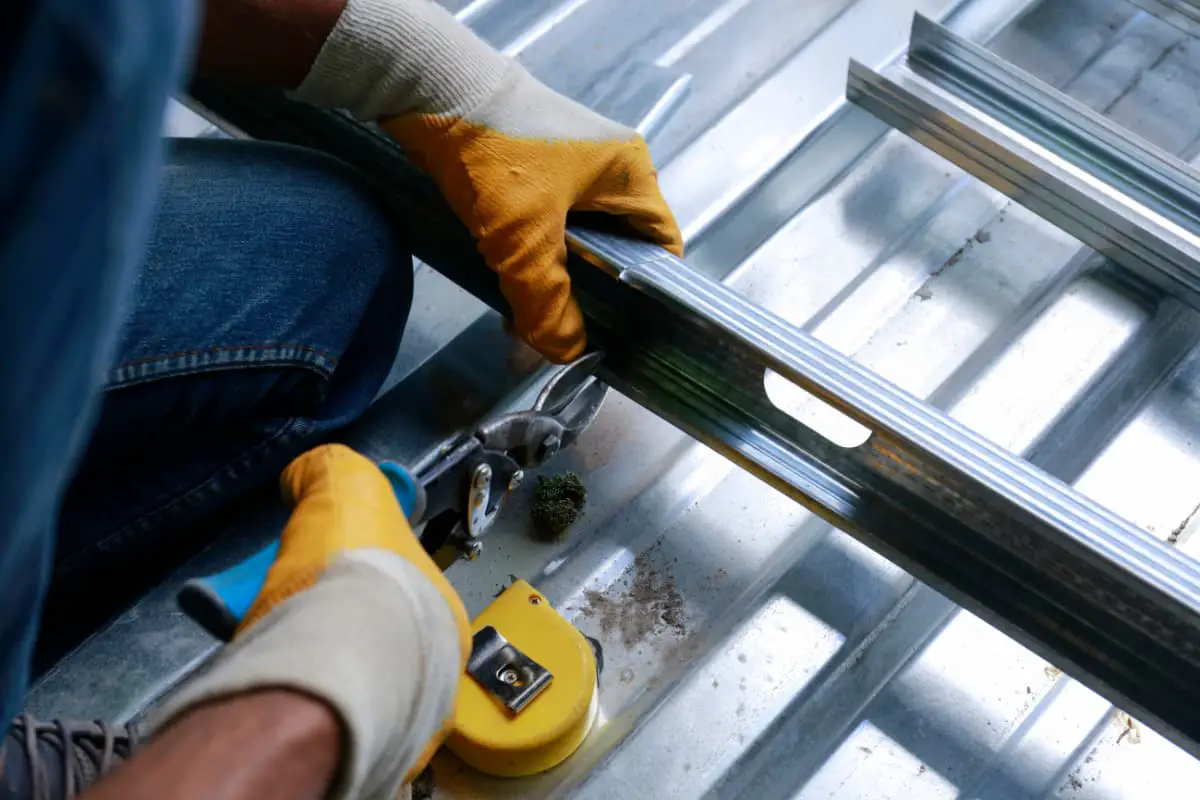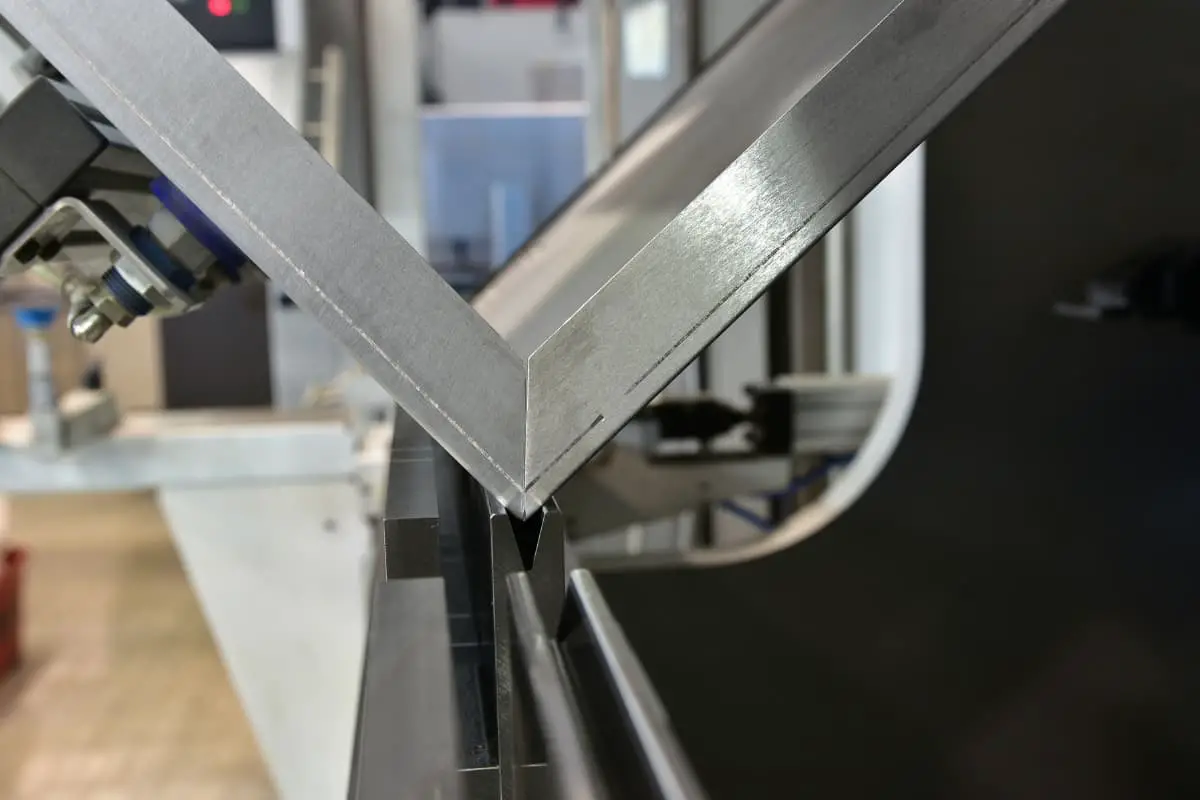
I. Classification of Pig Iron
Pig iron is generally classified by silicon content for grades, grouped by manganese content, graded by phosphorus content, and classified by sulfur content. The classification of pig iron is shown in Table 1.
Table 1 Classification of Pig Iron (GB/T 20932—2007)
| Classification Method | Classification Name | Description | |
| Classified by Use | Steel-making Pig Iron | Refers to the pig iron used for steelmaking in open hearths and converters, generally with lower silicon content (silicon mass fraction not greater than 1.75%), and higher sulfur content (sulfur mass fraction not greater than 0.07%). It is the main raw material for steelmaking, accounting for 80%~90% of pig iron production. Steel-making pig iron is hard and brittle, with a white fracture, hence also called white iron. | |
| Foundry Pig Iron | Refers to the pig iron used for casting various castings, commonly known as sand-turned iron. Generally, it has a higher silicon content (silicon mass fraction up to 3.75%), and slightly lower sulfur content (sulfur mass fraction less than 0.06%). It accounts for about 10% of pig iron production, is the main commercial iron in steel mills, and its fracture is gray, hence also called gray iron. | ||
| Classified by Chemical Composition Classification | Common Pig Iron | Refers to pig iron that does not contain other alloy elements, such as steel-making pig iron, foundry pig iron both belong to this category of pig iron. | |
| Special Pig Iron | Natural Alloy Pig Iron | Refers to a special type of pig iron smelted from iron ore or concentrate containing symbiotic metals (such as copper, vanadium, nickel, etc.), or reduced with a reducing agent. It contains a certain amount of alloy elements (one or more, determined by the composition of the ore), which can be used for steelmaking, as well as for casting. | |
| Ferroalloy | The difference between ferroalloy and natural alloy pig iron is that other components are deliberately added during iron smelting to produce a special type of pig iron containing various alloy elements. Ferroalloy is one of the raw materials for steelmaking, and can also be used for casting. In steelmaking, it serves as a deoxidizer and alloy element additive to improve the properties of steel. There are many types of ferroalloys, such as, according to the elements contained, they can be divided into ferrosilicon, ferromanganese, ferrochrome, ferrotungsten, ferromolybdenum, ferrotitanium, ferrovanadium, ferrophosphorus, ferroboron, ferronickel, ferro-niobium, silicomanganese alloy, and rare earth alloy, among which ferromanganese, ferrosilicon, and ferrochrome are the most used; according to the production method, they can be divided into blast furnace ferroalloy, electric furnace ferroalloy, out-of-furnace method ferroalloy, vacuum carbon reduction ferroalloy, etc. Different, can be divided into blast furnace ferroalloy, electric furnace ferroalloy, out-of-furnace method ferroalloy, vacuum carbon reduction ferroalloy, etc. | ||
II. Classification of Cast Iron
The classification of cast iron is shown in Table 2.
Table 2 Classification of Cast Iron
| Classification Method | Category Name | Description |
| Classified by Fracture Color | Gray Iron | 1) In this type of cast iron, most or all of the carbon exists in the form of free graphite, and its fracture surface is gray or dark gray. Gray iron includes gray cast iron, ductile cast iron, malleable cast iron, etc. 2) It has certain mechanical properties and good machinability, and is widely used in industry. |
| White Iron | 1) White iron is a type of iron-carbon alloy that has little or no graphite in its structure, with all carbon existing in the form of cementite, and its fracture surface is bright white. 2) It is hard and brittle, and cannot be machined by cutting. It is rarely used directly in industry to manufacture mechanical parts. In mechanical manufacturing, it can only be used to make parts that require high wear resistance. 3) It is possible to manufacture wear-resistant parts with a gray cast iron structure inside and a white iron structure on the surface, such as train wheel rims, rolling mill rolls, plowshares, etc., through a method of rapid cooling. This type of cast iron has very high surface hardness and wear resistance, and is commonly referred to as chilled cast iron or cold-hard cast iron. | |
| Mottled Iron | This is a type of cast iron that lies between white iron and gray cast iron, with a structure of pearlite + cementite + graphite, and its fracture surface is mottled gray and white, hence it is called mottled iron. This type of cast iron has poor performance and is rarely used. | |
| Classified by Chemical Composition | Common Cast Iron | Common cast iron refers to cast iron that does not contain any alloy elements, generally including commonly used gray cast iron, malleable cast iron, and ductile cast iron. |
| Alloy Cast Iron | Alloy cast iron is a type of advanced cast iron that is formulated by intentionally adding some alloy elements to common cast iron to improve certain special properties of the cast iron, such as various types of cast iron with special properties like corrosion resistance, heat resistance, and wear resistance. | |
| Classified by Production Method and Structural Performance | Gray Cast Iron | 1) In gray cast iron, carbon exists in the form of flake graphite. 2) Gray cast iron has certain strength, hardness, good vibration damping and wear resistance, higher thermal conductivity and thermal fatigue resistance, as well as good castability and machinability, simple production process, and low cost. It is widely used in both industrial and domestic life. |
| Inoculated Cast Iron | 1) Inoculated cast iron is a type of sub-eutectic gray cast iron obtained after inoculation treatment of molten iron. Inoculants are added to the molten iron to create artificial nuclei, thereby obtaining fine-grained pearlite and fine flake graphite structures. 2) This type of cast iron has much better strength, plasticity, and toughness than general gray cast iron, and its structure is also more uniform. It is mainly used to manufacture large cast iron parts that require higher mechanical properties and have large changes in cross-sectional dimensions. | |
| Malleable Cast Iron | 1) Malleable cast iron is obtained by graphitizing annealing of certain compositions of white iron, where most or all of the carbon exists in the form of flocculent graphite. Because its damage to the matrix is much less than that of flake graphite, it has higher toughness than gray cast iron. 2) Malleable cast iron is actually not forgeable, but it does have a certain degree of plasticity and is often used to manufacture castings that withstand impact loads. | |
| Ductile Cast Iron | 1) Ductile cast iron is obtained by adding a certain amount of spheroidizing agent (such as pure magnesium or its alloy) and inoculant (ferrosilicon or silicon-calcium alloy) to the molten iron before casting, to promote the crystallization of carbon in the form of spherical graphite. 2) Because the graphite is spherical, the stress is greatly reduced, thus the mechanical properties of this cast iron are much higher than those of gray cast iron, and also better than malleable cast iron. 3) Has better weldability and heat treatment processability than gray cast iron 4) Compared with steel, except for slightly lower plasticity and toughness, other properties are close, making it an excellent material that has both the advantages of steel and cast iron, thus it has been widely used in mechanical engineering | |
| Special performance Cast iron | This is a type of cast iron with certain characteristics, which can be divided into wear-resistant cast iron, heat-resistant cast iron, corrosion-resistant cast iron, etc., according to different uses. Most of these cast irons belong to alloy cast iron and are also widely used in machinery manufacturing |
III. Classification of steel
The classification of steel is shown in Table 3.
Table 3 Classification of steel
| Classification method | Classification name | Description | |
| Classified by smelting method | Classified by smelting equipment | Open hearth steel | 1) Refers to the steel produced by the open hearth steelmaking method 2) According to the different furnace lining materials, it is divided into acid open hearth steel and basic open hearth steel. Generally, open hearth steel is basic, and it is only in special cases that steel is smelted in an acid open hearth 3) The open hearth steelmaking method has the advantages of wide raw material sources, large equipment capacity, variety, and good quality. Open hearth steel used to have an absolute advantage in the world’s total steel output, but now there is a trend to stop building open hearths worldwide 4) The main varieties of open hearth steel are ordinary carbon steel, low alloy steel, and high-quality carbon steel |
| Converter steel | 1) Refers to the steel produced by the converter steelmaking method 2) In addition to being divided into acid and basic converter steel, it can also be divided into bottom-blown, side-blown, top-blown, and air-blown converter steel, and pure oxygen-blown converter steel, which can often be used in combination 3) China now produces a large amount of side-blown basic converter steel and oxygen top-blown converter steel. Oxygen top-blown converter steel has the advantages of fast production speed, high quality, low cost, small investment, and fast infrastructure construction, and is the main method of contemporary steelmaking 4) The main varieties of converter steel are ordinary carbon steel, and oxygen top-blown converters can also produce high-quality carbon steel and alloy steel | ||
| Electric furnace steel | 1) Refers to the steel produced by the electric furnace steelmaking method 2) Can be divided into electric arc furnace steel, induction furnace steel, vacuum induction furnace steel, electroslag furnace steel, vacuum self-consuming furnace steel, electron beam furnace steel, etc. 3) The main type produced in large quantities industrially is basic electric arc furnace steel, the varieties are high-quality carbon steel and alloy Steel | ||
| Classified by deoxidation degree and casting system | Boiling steel | 1) Steel that is not fully deoxidized, which boils during casting in the steel mold, hence called boiling steel 2) Its characteristics include high shrinkage rate, low cost, good surface quality, and deep drawing performance 3) Large composition segregation, uneven quality, poor corrosion resistance, and mechanical properties 4) Widely used in rolling ordinary carbon steel profiles and steel plates | |
| Killed steel | 1) Fully deoxidized steel, the molten steel is calm during casting, with no boiling phenomenon, hence called killed steel 2) Less composition segregation, uniform quality, but the metal has a low shrinkage rate (more shrinkage cavities), and higher cost 3) Under normal circumstances, alloy steel and high-quality carbon steel are killed steel | ||
| Semi-killed steel | 1) Steel with a degree of deoxidation between boiling steel and killed steel, with weaker boiling phenomenon during casting than boiling steel 2) The quality, cost, and shrinkage rate of the steel are also between boiling steel and killed steel. Production is difficult to control, so it currently occupies a small proportion of steel production | ||
| Classified by chemical composition | Carbon steel | 1) Refers to iron-carbon alloys with a carbon mass fraction ≤2%, and containing small amounts of impurity elements such as manganese, silicon, sulfur, phosphorus, and oxygen of iron-carbon alloy 2) Classified by the carbon content in the steel Low carbon steel: Steel with a carbon mass fraction ≤0.25% Medium carbon steel: Steel with a carbon mass fraction of >0.25%~0.60% High carbon steel: Steel with a carbon mass fraction >0.60% 3) According to the different quality and uses of steel, it is divided into three major categories: ordinary carbon structural steel, high-quality carbon structural steel, and carbon tool steel | |
| Alloy steel | 1) Steel refined by adding some alloying elements (such as chromium, nickel, silicon, manganese, molybdenum, tungsten, vanadium, titanium, boron, etc.) to improve the performance of carbon steel during smelting 2) Classified by the total content of its alloy elements Low alloy steel: This type of steel has a total alloy element mass fraction ≤5% Medium alloy steel: This type of steel has a total alloy element mass fraction >5%~10% High alloy steel: This type of steel has a total alloy element mass fraction >10% 3) Classified by the types of main alloy elements in the steel Ternary alloy steel: Refers to steel that contains another alloy element besides iron and carbon, such as manganese steel, chromium steel, boron steel, molybdenum steel, silicon steel, nickel steel, etc. Quaternary alloy steel: Refers to steel that contains two other alloy elements besides iron and carbon, such as silicon manganese steel, manganese boron steel, chromium manganese steel, chromium nickel steel, etc. Multi-element alloy steel: Refers to steel that contains three or more alloy elements besides iron and carbon Steel, such as chromium manganese titanium steel, silicon manganese molybdenum vanadium steel, etc. | ||
| Classified by use | Structural steel | For construction and engineering use Structural steel | 1) Steel used for manufacturing metal structural parts in buildings, bridges, ships, boilers, or other engineering projects, mostly low carbon steel. Since most of them need to be welded, their carbon content should not be too high, generally used in hot-rolled supply state or normalized state. 2) The main types are as follows Ordinary carbon structural steel: According to the use, it is divided into general-purpose ordinary carbon steel and special-purpose ordinary carbon steel. Low alloy steel: According to the use, it is divided into low alloy structural steel, corrosion-resistant steel, low-temperature steel, rebar steel, rail steel, wear-resistant steel, and special-purpose steel. |
| Structural steel for mechanical manufacturing | 1) Used for manufacturing structural parts on mechanical equipment 2) This type of steel is basically high-quality steel or advanced high-quality steel, which needs to undergo heat treatment, cold plastic forming, and mechanical cutting before it can be used. 3) The main types include high-quality carbon structural steel, alloy structural steel, free-cutting structural steel, spring steel, rolling bearing steel. | ||
| Tool steel | 1) Refers to the steel used for manufacturing various tools. 2) This type of steel is classified by its chemical composition into carbon tool steel, alloy tool steel, high-speed tool steel. 3) According to the use, it can be divided into cutting tool steel (or knife steel), die steel (including cold work die steel and hot work die steel), and gauge steel. | ||
| Special steel | 1) Refers to steel produced by special methods, with special physical, chemical properties, and mechanical properties. 2) Mainly includes stainless steel, heat-resistant steel, high electrical resistance alloy steel, low-temperature steel, wear-resistant steel, magnetic steel (including hard magnetic steel and soft magnetic steel), antimagnetic steel, and ultra-high strength steel (referring to steel with R m ≥1400MPa). | ||
| Professional steel | Refers to steel for professional use in various industrial sectors, such as steel for agricultural machinery, machine tools, heavy machinery, automobiles, aviation, aerospace, petroleum machinery, chemical machinery, boilers, electrical engineering, welding rods, etc. | ||
| Classified by metallographic structure | Classified by the metallographic structure after annealing | Hypoeutectoid steel | The mass fraction of carbon is <0.80%, the structure is free ferrite + pearlite |
| Eutectoid steel | The mass fraction of carbon is 0.80%, the structure is all pearlite | ||
| Hypereutectoid steel | The mass fraction of carbon is >0.80%, the structure is free carbide + pearlite | ||
| Lath martensite steel | It is actually also hypereutectoid steel, but its structure is a eutectic of carbides and pearlite | ||
| Classified by the metallographic structure after normalizing | Pearlite steel, bainite steel | When the content of alloy elements is low, steel that is cooled in air to obtain pearlite or sorbite, troostite belongs to pearlite steel; steel that obtains bainite belongs to bainite steel | |
| Martensite steel | When the content of alloy elements is high, steel that is cooled in air to obtain martensite is called martensite steel | ||
| Austenite steel | When the content of alloy elements is high, steel that is cooled in air and the austenite does not transform until room temperature is called austenite steel | ||
| Carbide steel | When the carbon content is high and contains a large amount of carbide-forming elements, steel that is cooled in air to obtain a mixture structure composed of carbides and its matrix structure (pearlite or martensite, austenite) is called carbide steel. The most typical carbide steel is high-speed tool steel | ||
| Classified by the presence or absence of phase change during heating, cooling, and the metallographic structure at room temperature | Ferritic steel | Contains very low carbon content and a large amount of elements that form or stabilize ferrite, such as chromium, silicon, etc., thus always maintaining a ferritic structure during heating or cooling | |
| Semi-ferritic steel | Contains low carbon content and more elements that form or stabilize ferrite, such as chromium, silicon, etc., during heating or cooling, only part undergoes α⇌γ phase transformation, while the other part always maintains the α-phase ferritic structure | ||
| Semi-austenitic steel | Contains certain elements that form or stabilize austenite, such as nickel, manganese, etc., thus during heating or cooling, only part undergoes α⇌γ phase transformation, while the other part always maintains the γ-phase austenitic structure | ||
| Austenitic steel | Contains a large amount of elements that form or stabilize austenite, such as manganese, nickel, etc., thus always maintaining an austenitic structure during heating or cooling | ||
| Classified by quality | Common steel | 1) Contains more impurity elements, among which the mass fraction of phosphorus and sulfur should both be ≤0.07% 2) Mainly used for building structures and mechanical parts with not very high requirements 3) The main types include common carbon steel, low alloy structural steel, etc. | |
| Quality steel | 1) Contains fewer impurity elements, better quality, among which the mass fraction of sulfur and phosphorus should both be ≤0.04%, mainly used for mechanical structural parts and tools 2) The main types include high-quality carbon structural steel, alloy structural steel, carbon tool steel and alloy tool steel, spring steel, bearing steel, etc. | ||
| High-grade quality steel | 1) Contains very few impurity elements, among which the mass fraction of sulfur and phosphorus should both be ≤0.03%, mainly used for important mechanical structural parts and tools 2) Most of the steels in this category are alloy structural steels and tool steels. To distinguish them from general high-quality steels, the grade number of these steels is usually followed by the symbol “A” for identification. | ||
| Classified by manufacturing process | Cast steel | 1) Refers to a type of steel casting produced by the casting method, with the carbon mass fraction generally ranging from 0.15% to 0.60%. 2) Casting performance is poor, often requiring heat treatment and alloying methods to improve its structure and properties, mainly used to manufacture some parts with complex shapes, difficult to forge or machine, but requiring high strength and plasticity. 3) Classified by chemical composition into cast carbon steel and cast alloy steel; by application into cast structural steel, cast special steel, and cast tool steel. | |
| Forged steel | 1) Various forgings and forged materials produced by the forging method. 2) Plasticity, toughness, and other mechanical properties are also higher than those of cast steel parts, used to manufacture some important machine parts. 3) In metallurgical factories, some section steels with larger sections are also produced and supplied in certain specifications by forging methods, such as forged round steel, square steel, and flat steel, etc. | ||
| Hot-rolled steel | 1) Refers to various hot-rolled steel materials produced by the hot rolling method. Most steel materials are made by hot rolling. 2) Hot rolling is commonly used to produce section steel, steel pipes, steel plates, and other large steel materials, as well as for rolling wire. | ||
| Cold-rolled steel | 1) Refers to various steel materials produced by the cold rolling method. 2) Compared with hot-rolled steel, the characteristics of cold-rolled steel are: smooth surface, precise dimensions, and good mechanical properties. 3) Cold rolling is commonly used to roll thin plates, steel strips, and steel pipes. | ||
| Cold-drawn steel | 1) Refers to various steel materials produced by the cold drawing method. 2) Characteristics are: high precision, good surface quality. 3) Cold drawing is mainly used to produce steel wire, as well as round steel and hexagonal steel with diameters below 50mm, and steel pipes with diameters below 76mm. | ||
IV. Classification of steel products
The classification of steel products is as shown in Table 4.
Table 4 Classification of steel products (GB/T15574—1995)
| Classification | Steel products | |
| Primary products | Liquid steel | Includes: ① Liquid steel obtained through smelting for casting; ② Liquid steel obtained by directly melting raw materials. Generally used to produce ingots or cast steel parts. |
| Primary products | Steel ingot | Refers to the product obtained by pouring molten steel into a steel ingot mold of a certain shape, including steel ingots used for rolling profiles and slab ingots used for rolling plates. The shape of the steel ingot mold is similar to the final product shape |
| Semi-finished product | Refers to the intermediate product obtained by initially rolling or forging the steel ingot, which still needs further processing, generally used for rolling or forging into finished products The cross-sectional shape of the semi-finished product can be square, rectangular, flat, or irregular, and the size of the cross-section remains unchanged along the length direction. The tolerance of the semi-finished product is larger than that of the finished product, with more rounded edges and corners. The sides may have slight indentations or protrusions or rolling (forging) marks, which can be partially or completely cleaned with grinding tools, spray guns, etc. | |
| Square cross-section semi-finished product | Classified by side length size: ①Large square billet: side length greater than 120mm; ②Square billet: side length is 40~120mm | |
| Rectangular cross-section semi-finished product (excluding flat cross-section) Semi-finished product, irregular cross-section Semi-finished product, used to produce seamless steel pipe semi-finished product) | Classified by cross-sectional size: ①Large rectangular billet: cross-sectional area greater than 14400mm², width-thickness ratio greater than 1 and less than 2; ②Rectangular billet: cross-sectional area is 1600~14400mm², width-thickness ratio greater than 1 and less than 2 | |
| Flat cross-section semi-finished product | Classified by cross-sectional size: ①Slab: thickness not less than 50mm, width-thickness ratio not less than 2 (when the width-thickness ratio is greater than 4, it is called a flat slab); ②Thin slab: width not less than 150mm, thickness greater than 6mm and less than 50mm | |
| Irregular cross-section semi-finished product (Referred to as special-shaped billet) | The cross-sectional area is usually greater than 2500mm², generally used for producing profile steel | |
| Semi-finished product used to produce seamless steel pipes (referred to as pipe billet) | The cross-section is circular, square, rectangular, or polygonal | |
| Rolled finished product And final product | General provisions | Rolled finished products and final products: refers to products produced by rolling methods (generally not subjected to heat treatment within the steel plant). The cross-section does not change along the length direction or changes periodically. The nominal size range, shape, and dimensional tolerances of the product are specified by relevant standards. The surface is smooth, or can have regular patterns (such as rebar, lentil pattern plate, etc.) |
| Classified by shape and size into bar steel, coil steel, flat products, and steel pipes | ||
| Classified by production stage: ①Hot-rolled finished products and final products: mostly made by hot rolling of semi-finished products, can also be made by hot rolling of initial products; ②Cold-rolled (drawn) finished products and final products: generally made by cold rolling (drawing) of hot-rolled products | ||
| Classified by surface condition: ①Products without surface treatment; ②Products with a passivation layer on the surface: a layer of chromate or phosphate is obtained on the product surface by chemical or electrochemical methods, with a passivation layer single-side weight of 7~10mg/m²; ③Products with organic coating on the surface; ④Products with a protective film (such as adhesive coating, adhesive paper, varnish) on the surface; ⑤Products with grease coating, oil, pitch, asphalt, lime, or any soluble substance on the surface; ⑥Products treated by other surface treatments | ||
| Forged bar steel | General provisions | Bar-shaped steel material produced by forging methods, conforming to the general characteristics of rolled products |
Classification of non-ferrous metal materials
The classification of non-ferrous metals and alloys is shown in Table 5 and Table 6.
Table 5 Classification of Non-Ferrous Metals
| Type | Performance Characteristics and Applications |
| Light metals (Al, Mg, Ti, Na, K, Ca, Sr, Ba) | With a density below 4.5g/cm³, they are chemically active. Among them, aluminum (Al) has the largest production volume, accounting for more than 1/3 of the total non-ferrous metal output, and is the most widely used. Pure light metals mainly utilize their special physical or chemical properties, with aluminum (Al), magnesium (Mg), and titanium (Ti) used in the preparation of lightweight alloys. |
| Heavy metals (Cu, Ni, Co, Zn, Sn, Pb, Sb, Cd, Bi, Hg) | All have densities greater than 4.5g/cm³, including Cu, Ni, Co, Pb, Cd, Bi, Hg, all of which have densities greater than iron (7.87g/cm³). Pure metals often utilize their unique physical or chemical properties, such as Cu used in electrical engineering. And the electronics industry. Ni, Co are used in the preparation of magnetic alloys, high-temperature alloys, and as important alloying elements in steel. Pb, Zn, Sn, Cd, Cu are used in bearing alloys and printing alloys, Ni, Cu are also used as catalysts. |
| Precious metals (Au, Ag, Pt, Ir, Os, Ru, Pd, Rh) | Limited reserves, difficult extraction, expensive prices, low chemical activity, high density (10.5~22.5g/cm³). Au, Ag, Pt, Pd have good plasticity, Au, Ag also have good electrical and thermal conductivity. Precious metals can be used in electrical engineering, electronics, aerospace, instrumentation, and chemical industries. |
| Rare Metals | Rare metals refer to metals that are scarce in reserves and difficult to extract, usually including: lithium (Li), beryllium (Be), scandium (Sc), vanadium (V), gallium (Ga), germanium (Ge), rubidium (Rb), yttrium (Y), zirconium (Zr), niobium (Nb), molybdenum (Mo), indium (In), cesium (Cs), lanthanides (La, Ce, Pr, Nd, etc., 15 elements), hafnium (Hf), tantalum (Ta), tungsten (W), rhenium (Re), thallium (Tl), polonium (Po), francium (Fr), radium (Ra), actinides (Ac, Th, Pa, U) and transuranic elements. Based on the physical and chemical properties or production characteristics of these rare metal elements, they can be divided into: rare light metals, rare refractory metals, rare dispersed metals, rare earth metals, and rare radioactive metals in 5 categories. |
| Rare Light Metals (Li, Be, Rb, Cs) | All have densities less than 2g/cm³, among which lithium has a density of only 0.534g/cm³. They are chemically active. In addition to utilizing their special physical or chemical properties, they are also used as important alloying elements in special performance alloys, such as aluminum-lithium (Al-Li) alloys, beryllium alloys, etc. |
| Rare Refractory Metals (W, Mo, Ta, Nb, Zr, Hf, V, Re) | High melting points (for example, zirconium has a melting point of 1852℃, tungsten has a melting point of 3387℃), high hardness, good corrosion resistance, and can form very hard and insoluble carbides, nitrides, silicides, and borides. They can be used as important materials for hard alloys, electric heating alloys, filaments, electrodes, etc., and as alloying elements in steel and other alloys. |
| Rare Earth Metals (RE, Sc, Y) | A total of 17 metal elements, from La to Eu (atomic numbers 57~63) are called light rare earth metals, from Gd to Lu (atomic numbers 64~71) are called heavy rare earth metals. 200 years ago, people could only obtain rare earth metal oxides that looked similar to alkaline earth metal oxides, hence the name “rare earth” has been used to this day. The atomic structures of rare earth metal elements are close, and their physical and chemical properties are also similar. They are associated in ores, and a complicated process is required to separate each element during extraction. Industrially, mixed rare earths, that is, alloys of light rare earth metals or heavy rare earth metals, can sometimes be used. Rare earth metals are chemically active and can form stable oxides, hydrides, etc. Rare earth metals and compounds have a series of special physical and chemical properties that can be utilized, and they are also excellent deoxidizers and purifiers in the smelting process of other alloys. A small amount of rare earth metals often play a significant role in improving the structure and properties of alloys, and rare earth metals are also one of the main components of a series of special performance alloys. |
| Rare Radioactive Metals | Includes natural radioactive elements: polonium (Po), radium (Ra), actinium (Ac), thorium (Th), protactinium (Pa), uranium (U) and synthetic transuranic elements francium (Fr), technetium (Tc), neptunium (Np), plutonium (Pu), americium (Am), curium (Cm), berkelium (Bk), californium (Cf), einsteinium (Es), fermium (Fm), mendelevium (Md), nobelium (No), and lawrencium (Lw). They are important materials for scientific research and the nuclear industry. |
Table 6 Classification of Commonly Used Non-Ferrous Alloys in Industry
| Alloy Type | Alloy Varieties | Alloy Series |
| Copper Alloys | Ordinary Brass | Cu-Zn alloy, can be deformed or cast. |
| Special Brass | Based on Cu-Zn, also contains alloy elements such as Al, Si, Mn, Pb, Sn, Fe, Ni, can be deformed or cast. | |
| Tin Bronze | Based on Cu-Sn, added with alloy elements such as P, Zn, Pb, can be deformed or cast. | |
| Special Bronze | Copper alloys not primarily composed of Zn, Sn, or Ni, including aluminum bronze, silicon bronze, manganese bronze, beryllium bronze, zirconium bronze, chromium bronze, cadmium bronze, magnesium bronze, etc., can be deformed or cast | |
| Ordinary white copper | Cu-Ni alloy, deformable | |
| Special white copper | Adding other alloying elements on the basis of Cu-Ni, including manganese white copper, iron white copper, zinc white copper, aluminum white copper, etc., deformable | |
| Aluminum alloy | Deformable aluminum alloy | Produced by deformation processing methods such as tubes, rods, wires, profiles, plates, strips, bars, forgings, etc. Alloy series include: industrial pure aluminum (mass fraction >99%), Al-Cu or Al-Cu-Li, Al-Mn, Al-Si, Al-Mg, Al-Mg-Si, Al-Zn-Mg, Al-Li-Sn, Zr, B, Fe or Cu, etc. |
| Cast aluminum alloy | Aluminum alloy for casting special-shaped castings, alloy series include industrial pure aluminum, Al-Cu, Al-Si-Cu or Al-Mg-Si, Al-Si, Al-Mg, Al-Zn-Mg, Al-Li-Sn(Zr, B or Cu) | |
| Magnesium alloy | Deformable magnesium alloy | Produced by deformation processing methods such as plates, rods, profiles, tubes, wires, forgings, etc., alloy series include Mg-Al-Zn-Mn, Mg-Al-Zn-Cs, Mg-Al-Zn-Zr, Mg-Th-Zr, Mg-Th-Mn, etc., among which magnesium alloys containing Zr, Th can be age-hardened |
| Cast magnesium alloy | Alloy series similar to deformable alloys, sand-cast magnesium alloys may also contain rare earth elements with a mass fraction of 1.2% to 3.2% or a mass fraction of 2.5% Be | |
| Titanium alloy | α titanium alloy | Has a crystal structure of α (close-packed hexagonal hcp) solid solution, containing stabilizing α phase and solid solution Alloy elements aluminum (increasing α—β transition temperature) for strengthening and alloy elements for solid solution strengthening Copper and tin, copper also has precipitation strengthening effect. Alloy series are Ti-Al, Ti-Cu-Sn |
| Near α titanium alloy | By adjusting the chemical composition and different heat treatment regimes, α or α+β phase structures can be formed to meet certain performance requirements | |
| α+β titanium alloy | Contains alloy elements aluminum that stabilize the α phase and alloy elements vanadium or tantalum, molybdenum, niobium that stabilize the β phase (lowering the α—β transition temperature), having an α+β phase structure at room temperature. Alloy series are Ti-Al-V(Ta, Mo, Nb) | |
| β titanium alloy | Contains stabilizing β phase alloy elements vanadium or molybdenum, after rapid cooling, it has a metastable β structure at room temperature. Alloy series are Ti-V(Mo, Ta, Nb) | |
| High-temperature alloy | Nickel-based high-temperature alloy | High-temperature alloys refer to heat-resistant materials that still have sufficient lasting strength, creep strength, thermal fatigue strength, high-temperature toughness, and sufficient chemical stability at around 1000°C, used for thermodynamic components working at high temperatures. Alloy series are Ni-Cr-Al, Ni-Cr-Al-Ti, etc., often containing other alloying elements |
| Cobalt-based high-temperature alloy | The alloy system includes Co-Cr, Co-Ni-W, Co-Mo-Mn-Si-C, etc. | |
| Zinc alloy | Deformation processed zinc alloy | The alloy system includes Zn-Cu, etc. |
| Cast zinc alloy | The alloy system includes Zn-Al, etc. | |
| Bearing alloy | Lead-based bearing alloy | The alloy system includes Pb-Sn, Pb-Sb, Pb-Sb-Sn, etc. |
| Tin-based bearing alloy | The alloy system includes Sn-Sb, etc. | |
| Other bearing alloys | The alloy system includes copper alloy, aluminum alloy, etc. | |
| Hard alloy | Tungsten carbide | Alloy with cobalt as a binder, used for cutting cast iron or making mining drill bits |
| Tungsten carbide, titanium carbide | Alloy with cobalt as a binder, used for cutting steel | |
| Tungsten carbide, titanium carbide, Niobium carbide | Alloy with cobalt as a binder, has high high-temperature performance and wear resistance, used for processing alloy structural steel and nickel-chromium stainless steel |

